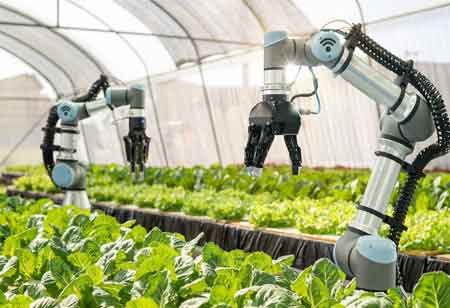Thank you for Subscribing to Agri Business Review Weekly Brief
How does Technology Transform the Facets of the Agriculture Sector
Millions of people around the world depend on agriculture for their food supplies.

By
Agri Business Review | Tuesday, May 23, 2023
Stay ahead of the industry with exclusive feature stories on the top companies, expert insights and the latest news delivered straight to your inbox. Subscribe today.
Technology covers a larger part of agricultural techniques and has countless benefits, such as predicting yields with accuracy, increasing agriculture productivity, and preventing soil degradation.
FREMONT, CA: Millions of people around the world depend on agriculture for their food supplies. Nations also rely heavily on agriculture for their GDP. Technology advancements have paved the way for a revolutionary transformation in the agricultural sector and brought monumental shift in the way people carried out farming operations. Biotechnology has made it possible to cultivate crops in the desert today. As a result of this technique, plants have been able to survive droughts.
Using genetic engineering, scientists can add features to existing genes to produce drought- and pest-resistant crops. Today's agriculture and farming are significantly different from those of the past, thanks to the use of modern technology. A majority of farmers use high-tech equipment, gear, and sensors in their farming operations. The technology they use is the most cutting-edge available today.
The role of technology in agriculture is summarized below:
Mechanics: Instead of buying new equipment, a farmer can now cultivate more than 2 acres of land with less effort and save even more money by purchasing a used tractor and other harvesting technologies. It is quite easy to plant and harvest with the help of planters and harvesters.
Plants that have been genetically modified: GM plants, such as potatoes, can withstand diseases and pests, resulting in excellent harvests and saving farmers time. Plants of this type grow quickly and produce high yields. As they are resistant to most illnesses and pests, farmers will need to use fewer pesticides, increasing their return on investment.
The transportation industry: As a result, crops can be delivered from the farm to markets in a timely manner. Due to modern transportation, Dubai consumers will be able to taste fresh carrots from Africa on the same day that they are harvested from African gardens. Modern transportation technology makes it easier for farmers to transport fertilizers to their farms, and agricultural products can also be delivered faster from fields to marketplaces, where customers can purchase them regularly.
Facilities for cooling: Farmers use these to transport tomatoes and other perishable commodities to markets. To ensure fresh produce, such as tomatoes, is delivered to customers, food distribution trucks are equipped with these cooling systems.
Illness-Resistant Animals: Genetically modified animals produce more milk or fur than natural animals. The farmer will benefit from this since their output will increase. Animal grazing benefits from crossbreeding because crossbred animals are stronger and more productive.
Predicting yields accurately: With some agriculture technology, farmers will be able to predict yields in advance of harvesting their crops. In addition to reducing food waste and improving profitability, growers will be able to sell their entire harvest.
Farming with drones: In agriculture, drones are used to monitor crops and livestock more frequently and cost-effectively. Farmers can simplify their operations and gain valuable insights into their crops using drones in agriculture for sustainable agricultural management.





